Astrophotographer John Goldsmith chronicles his travels during Comet Hale-Bopp's famous apparition 20 years ago. His images capture what ancients might have seen 4,200+ years before.
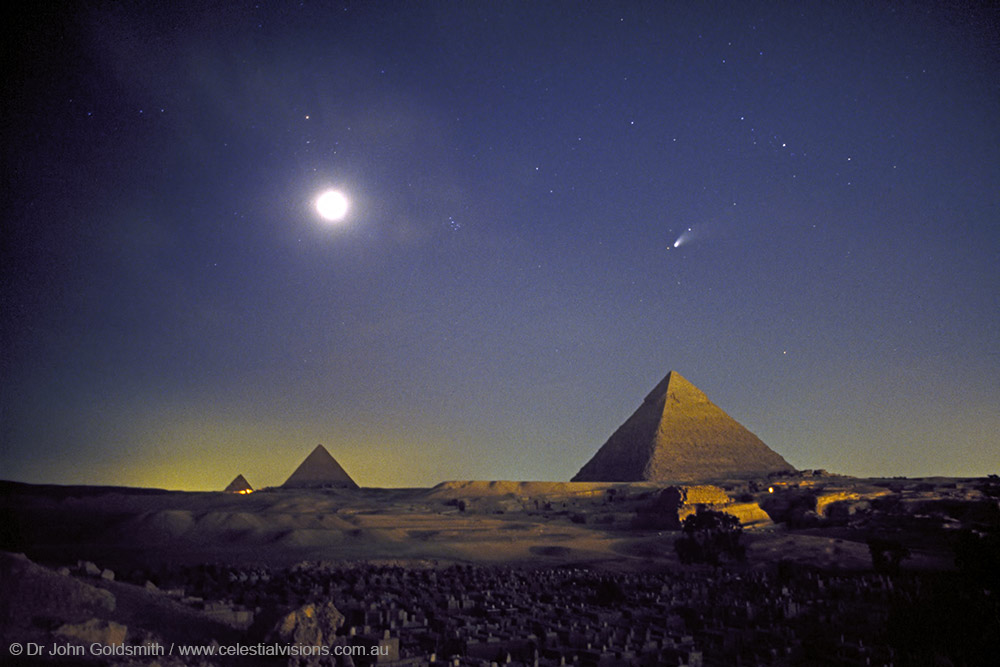
John Goldsmith
Comet Hale-Bopp’s appearance 20 years ago, in 1997, provided sky-lovers around the world with an opportunity to witness a truly great comet. Through a remarkable circumstance, I embarked on an astrophotography adventure to document the comet’s appearance above two of the most famous ancient heritage sites in the world: the Pyramids of Giza and Stonehenge.
Two U.S. amateur astronomers, Alan Hale and Thomas Bopp, independently discovered the comet in July 1995. It prompted excited anticipation among skywatchers, astronomers, and astrophotographers around the world, thanks to the prospect of a superb display during its close approach to the Sun in April 1997.
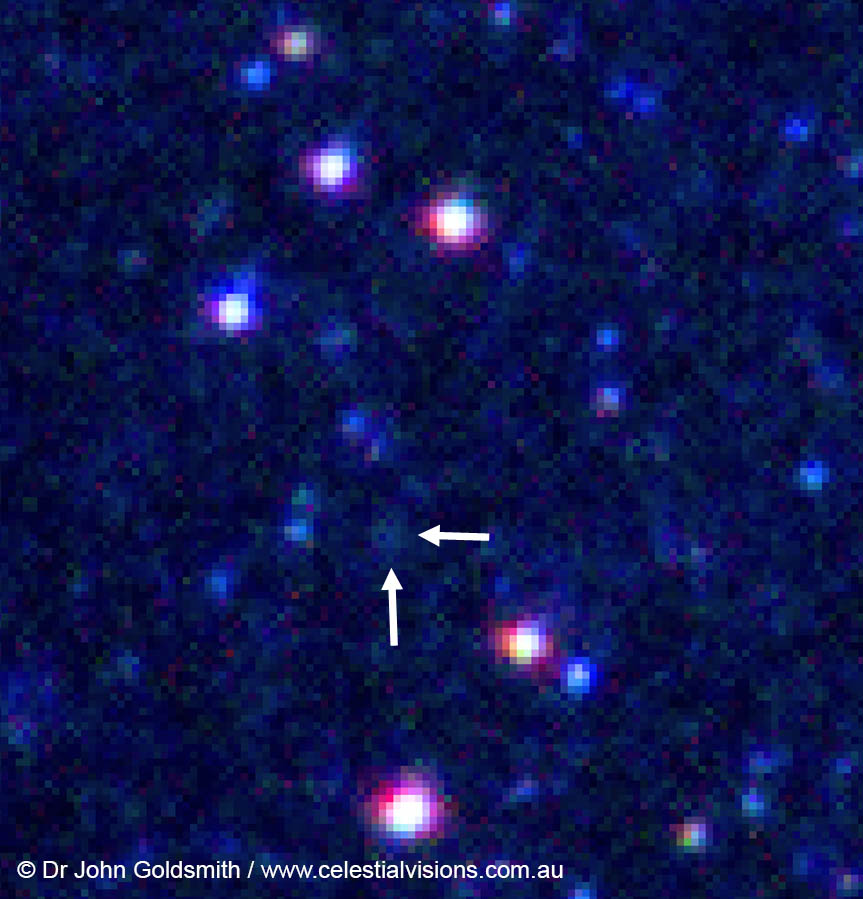
John Goldsmith
But for me, it was a serendipitous series of astrophotos that made the comet’s appearance so much more special. Six days before the discovery, I received a phone call from a local astronomy enthusiast in Western Australia, Grant Thornett, who alerted me to a suspected nova in the constellation Sagittarius. I recorded a series of astrophotos, attempting to document his observation using a modest 50mm lens, but I couldn’t detect anything out of the ordinary.
About a week later, the Comet Hale-Bopp discovery, and its appearance in the constellation Sagittarius, was broadcast around the world. I suddenly realised that my recent sequence of images of that part of the sky might have recorded the comet. As more detailed information became available, with more precise ephemeris data, I carefully checked the astrophotos and remarkably, a faint image of the comet appeared precisely in the correct position. The astrophotos record rare pre-discovery images of the comet when the comet was approximately 1 billion kilometers distant.
As more details about the comet became available, astronomers realized that the comet had last been visible some 4,200 years ago. That fact captured my attention, and my imagination — I wondered what the comet might have looked like more than four thousand years ago, and who might have seen it. Did ancient civilisations witness the comet? Perhaps ancient Egyptians or those who created Stonehenge?
That’s when I realised the opportunity for my greatest astrophotography adventure. Why not document the current appearance of Comet Hale-Bopp above these ancient monuments? With that as my central mission, I planned my journey from Western Australia to Egypt, then on to Stonehenge in the United Kingdom.
Ancient Encounters
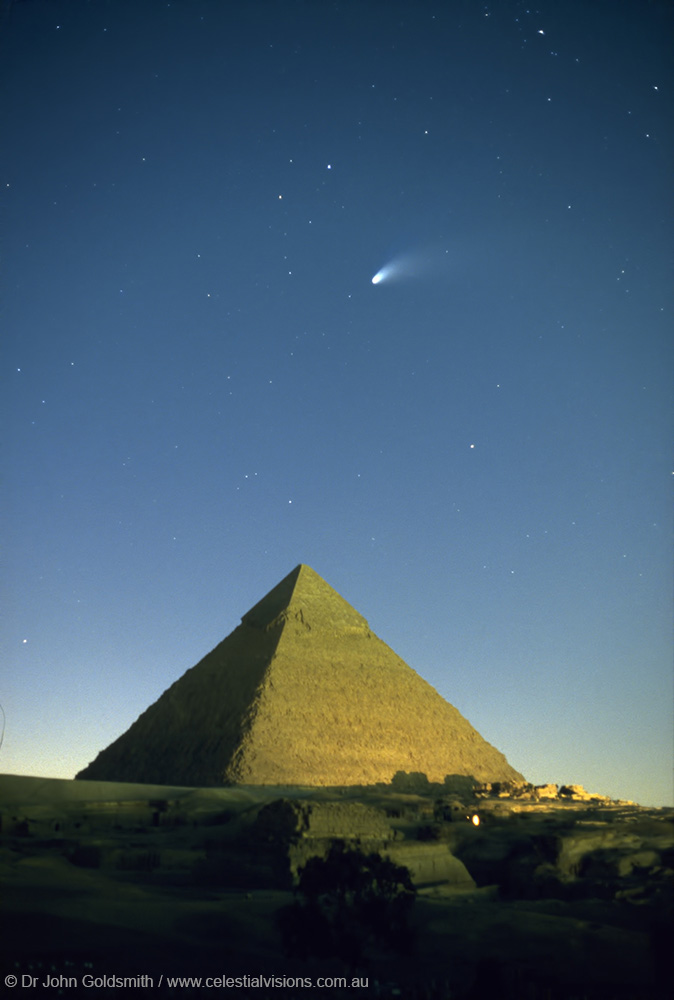
Arriving in Cairo, I spent almost three weeks photographing the comet above the Pyramids of Giza. It’s difficult to describe the sublime experience of witnessing this spectacle. Standing on the edge of the desert overlooking the Pyramids and Sphinx, twilight descended and Comet Hale-Bopp emerged with its curving dust tail. Floodlight bathed the Pyramids in multi-colored glows, and laser light beamed onto the Pyramids during the nightly sound and light show. The comet appeared serene above the nighttime hum of Cairo and Giza that spread across the landscape. Calls for the evening Islamic prayers echoed across the ancient desert landscape.
The bright comet was even visible from the center of Cairo, above the magnificent Sultan Hassan Mosque. The mosque’s tall minaret towers are topped with astronomical symbolism, the crescent moon. When a tall fence partially blocked my view, a local stall-holder invited me onto the roof of his street stall, giving us a clear view, and I photographed the comet above the minaret towers. We watched the comet from our unique vantage point as the busy nightlife continued below us.
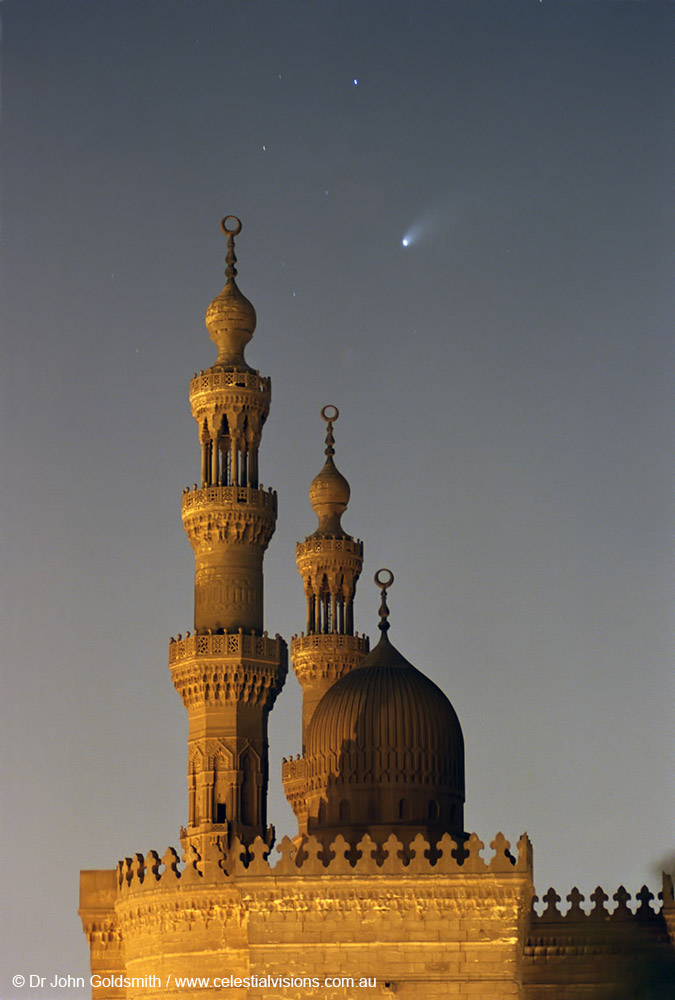
John Goldsmith
Then my journey continued to Stonehenge in the United Kingdom. I sought and obtained permission from English Heritage, the managers of Stonehenge, to photograph the comet above Stonehenge at night, a truly fantastic opportunity. And I even encountered clear skies. After my previous weeks in Egypt’s desert heat, I keenly felt the night’s icy cold. As darkness descended, I photographed the comet’s graceful curving tail above the ancient stone circle. Later, I paused and opened my copy of Sir Patrick Moore’s book “The Sky at Night.” In the page margin of his chapter titled “Astronomy and the Ancients,” I wrote, “I’m reading this chapter late at night from within the inner circle of Stonehenge, April 28, 1997.”
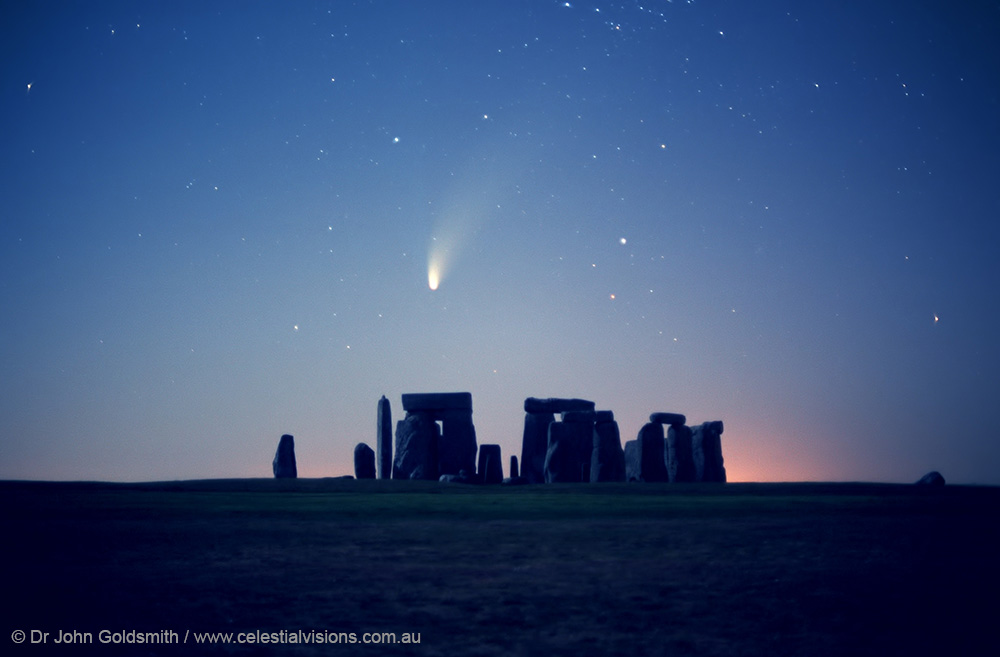
John Goldsmith
The Spectacle of Great Comets
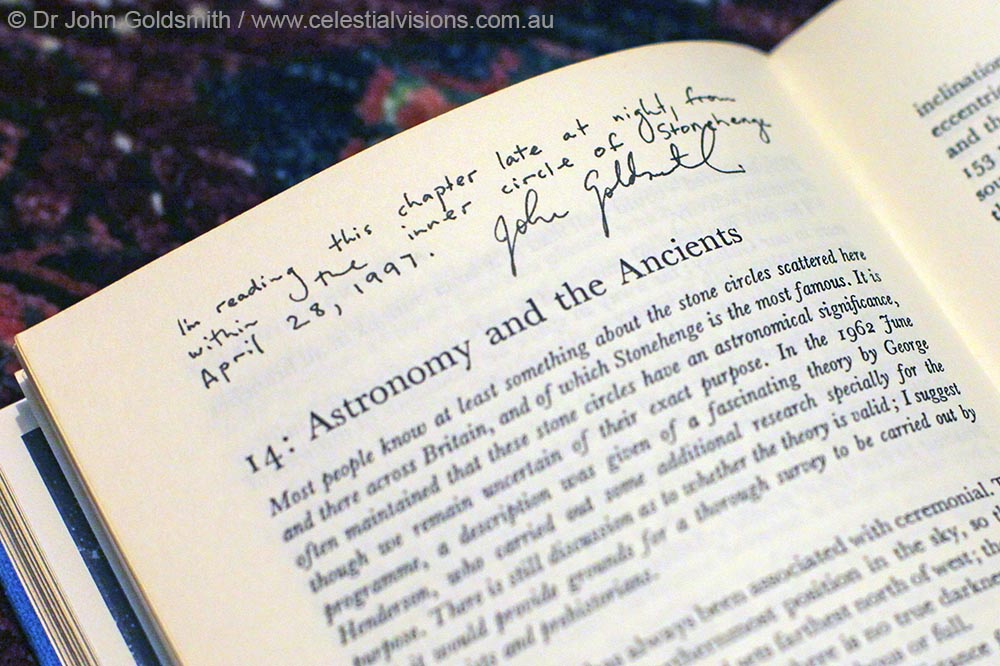
John Goldsmith
Great comets provide a sublime experience. Comet Hyakutake’s remarkable close approach to our planet in 1996, produced a 60° long tail. A decade later, (2007) Comet McNaught provided a stunning spectacle; its multi-rayed dust tail curved strongly across the western evening sky. And then came the beautifully named Comet Lovejoy in 2011. It produced an ethereal, ghost-like tail that was 20° long, visible above the southeastern horizon before dawn twilight. Not to mention my first experience of the famous Halley’s Comet in 1986.
My astrophotography adventure to document Comet Hale-Bopp is one of many that I’ve pursued to document the cosmos, landscapes, culture, and the sheer beauty of the night sky. My fascination has led me to explore how the night sky inspires people and civilisations around the world, and ultimately it guided my PhD thesis, titled “Cosmos, Culture, and Landscape.” I was privileged to learn about and document Australian Aboriginal astronomical knowledge, including knowledge associated with Wolfe Creek Meteorite Crater, a spectacular, ancient, massive impact crater in remote Western Australia.
Twenty years after Comet Hale-Bopp’s inspirational appearance, the night sky continues to provide me with a sense of fascination and wonder, and astrophotography provides me the means to document these remarkable events and places.
End note: A series of Comet Hale-Bopp images, including a selection of Dr John Goldsmith’s astro-images, are featured on The World at Night website.
Acknowledgements: The World at Night, Grant Thornett (Western Australia), Consulate General of the Arab Republic of Egypt (Australia), Dr Anas Osman (Helwan Observatory, Egypt), English Heritage (United Kingdom) and Sir Patrick Moore.
 0
0
Comments
You must be logged in to post a comment.